Code
HCS5985
Weight
1.8 Kg / 3.97 lbs
Size
Height
22cm (9") Material
Copper
Availability
Sold
Date Added
2011-01-28 22:16:36
Note : We used to sell this product 14 years ago so it may no longer be in our stock.
It is possible that we still have it with our suppliers but the price could be different from before.
Feel free to order. We will verify availability and inform you promptly.
It is possible that we still have it with our suppliers but the price could be different from before.
Feel free to order. We will verify availability and inform you promptly.

Safe Payment
We accept Paypal, Money Transfer, Bank Transfer
Confidence
Protection covers your purchase and personal data.
Worldwide Delivery
We ship Worldwide, except Russia.Shipping cost US$25.2 for upto 0.5 kgs

Hotline
Talk to help line for your question on 9841267335Yamantaka - Heruka presides over the eastern direction and is one of the popular deities of the Nepalese Buddhist Pantheon. It is said that he is the emanation of Bodhisattva Manjushree. With great awesome and virtuous strength, he is capable of subduing poisonous serpents and eliminating countless obstacles.
Bodhisattva Manjushree took this wrathful form in order to subdue the Lord of death. So Yamantaka - Heruka symbolizes the victory of wisdom over death, evil and suffering. How Yamantaka - Heruka subdued Yama, Lord of death is described in a legend. It is said that a Bonpo ascetic was just attaining the final stage of his meditative experience after a long years of samadhi. In the mean time a gang of robbers entered his cave in order to slaughter a bull they had stolen. Having cut off the bull's head they happened to see him and immediately began to attack him. thiis ascetic begged for mercy but they did not hear his request. they severed his head. All of sudden this severed head took the form of Yama and fitted the bull's head on to the place of his own lost head and then massacred the robbers and drank their blood from cups made of their skulls. Out of the great rage he even threatened to destroy the whole of Tibet. then the Tibetans prayed to their protector Manjushree, who then transformed himself into a wrathful appearance of Yamantaka - Heruka in order to conquer Yama. In the ferocious battle that followed, Yama was subdued. He later determined to become a protector of dharma (thus the name Dharmaraja for Yama). Among the many forms of Yamantaka - Heruka, Yamantaka - Heruka Vajra-bhairava is the most popular. He is described in the meditational
texts as follows: Yamantaka - Heruka Vajrabhairava has eight heads. Tee principle head is that of a bull or a buffalo. He has 34 arms and 16 feet to subdue Yama from escaping. On the top of the eight heads lies the gentle face of golden coloured image of Manjushree. His two principal hands hold a skull bowl and a vajra chopper (skt. kartri). the legs are clustered together. His erect phallus has bright red tip. He wears a garland of severed heads, a crown of five skulls symbolizing he has the wisdom of five Buddhas. Beneath the feet lie the subjugated deities and animals. He is usually depicted with his Prajna.
Bodhisattva Manjushree took this wrathful form in order to subdue the Lord of death. So Yamantaka - Heruka symbolizes the victory of wisdom over death, evil and suffering. How Yamantaka - Heruka subdued Yama, Lord of death is described in a legend. It is said that a Bonpo ascetic was just attaining the final stage of his meditative experience after a long years of samadhi. In the mean time a gang of robbers entered his cave in order to slaughter a bull they had stolen. Having cut off the bull's head they happened to see him and immediately began to attack him. thiis ascetic begged for mercy but they did not hear his request. they severed his head. All of sudden this severed head took the form of Yama and fitted the bull's head on to the place of his own lost head and then massacred the robbers and drank their blood from cups made of their skulls. Out of the great rage he even threatened to destroy the whole of Tibet. then the Tibetans prayed to their protector Manjushree, who then transformed himself into a wrathful appearance of Yamantaka - Heruka in order to conquer Yama. In the ferocious battle that followed, Yama was subdued. He later determined to become a protector of dharma (thus the name Dharmaraja for Yama). Among the many forms of Yamantaka - Heruka, Yamantaka - Heruka Vajra-bhairava is the most popular. He is described in the meditational
texts as follows: Yamantaka - Heruka Vajrabhairava has eight heads. Tee principle head is that of a bull or a buffalo. He has 34 arms and 16 feet to subdue Yama from escaping. On the top of the eight heads lies the gentle face of golden coloured image of Manjushree. His two principal hands hold a skull bowl and a vajra chopper (skt. kartri). the legs are clustered together. His erect phallus has bright red tip. He wears a garland of severed heads, a crown of five skulls symbolizing he has the wisdom of five Buddhas. Beneath the feet lie the subjugated deities and animals. He is usually depicted with his Prajna.
About sold
this item is sold
this item is sold
Brief Introduction :
OM AH RA PA TSA NA DHIH
Yama represents the end of one cycle & beginning of another. The deity Yama is wrathful to try to encourage you not to return to a previous cycle or habit. He is there to help you break the cyclical nature of existence [Skt. Samsara so that you can access the higher realm of human consciousness. He is fed up with the attachment of mankind to the Five negative afflictions [Skt. Kleashas] if pushed he has the authority to send you at your physical death to a place of ice & fire.
Iconography :The five skulls on Yama's diadem represent the Five Negative Affliction Or poisonous Buddhsit_Art_Yamaobstacles [Skt. Kleshas] to spiritual development which are greed, hatred, delusion, jealousy & pride & the transmutation of the five afflictions into the five wisdoms. His special power to change the five troubles is indicated by the tongues of crimson flame that arise from the cranium of each skull. He is painted with a bull's head, and he straddles a blue boar which crushes a human form. In his left hand in the threatening hand position [Skt. Tarjani Mudra] Yama brandishes a skull club [Skt. Kapala Danda] also carried by Kali [Shiva] & Bhairav that symbolises "smashing the veil of ignorance" and the ultimate emptiness of all phenomena which we need to realise the highest Buddhist ideal of Great Bliss [Skt. Mahasukha], pure consciousness and love. The energy is so powerful that it is sealed with a half vajra at the top. The white silk ribbons represents his ability adapt his energy to destroy ignorance in all its forms. In his right hand he holds a rope noose [Skt. Pasha] . One end has a hook and the other a ring which representing the catching & binding of the ego, the possibility of strangulation.
His sister Yami holds a skullcap [Skt. Kapala] held at his heart in his right hand hold red rejuvenating blood of Great Bliss called Raktavarna[skt.] representing 'wisdom'. The white breast ornament represents the wheel of life [Skt. Jivan Chakra] Jivan is a Sanskrit word meaning soul. Chakra means wheel. The wheel of Life is often called the Bhavacakra. Bhava means container or receptacle in the sense of body or form. The degree of wrath & and tantric power a deity has is often measured by the quantity of flame in the aureole of flame surrounding body. Yama is surrounded by a Fire Wheel [Tib. Me-Khor] which represents his ability to annihilate anything or anyone that crosses his path, but especially the obscuration to pure conscious enlightenment of which ignorance is considered the chief poison. The fire wheel radiate as pure psychic energy whose potency is alluded to in Yama's erect penis. Nothing can withstand Yama's fire wheel. In the foreground there are the Three Skull Offerings which represent the items necessary for rebirth. The left & right skulls are traditionally mounted on three smaller skulls. The left blue blood represents semen & the right red blood fertile uterine blood with the central skull contains the offering of the five senses representing the consciousness. The five senses are 1. the heart representing touch, 2. the eyes - sight, 3. tongue - taste, 4. nose - smell & 5. ears - sound. The attached hair indicates its freshness. The offering of the five senses is key to Yama's purpose; the offering is about rebirth the beginning of something new life.
Commentary :His sister Yami holds a skullcap [Skt. Kapala] held at his heart in his right hand hold red rejuvenating blood of Great Bliss called Raktavarna[skt.] representing 'wisdom'. The white breast ornament represents the wheel of life [Skt. Jivan Chakra] Jivan is a Sanskrit word meaning soul. Chakra means wheel. The wheel of Life is often called the Bhavacakra. Bhava means container or receptacle in the sense of body or form. The degree of wrath & and tantric power a deity has is often measured by the quantity of flame in the aureole of flame surrounding body. Yama is surrounded by a Fire Wheel [Tib. Me-Khor] which represents his ability to annihilate anything or anyone that crosses his path, but especially the obscuration to pure conscious enlightenment of which ignorance is considered the chief poison. The fire wheel radiate as pure psychic energy whose potency is alluded to in Yama's erect penis. Nothing can withstand Yama's fire wheel. In the foreground there are the Three Skull Offerings which represent the items necessary for rebirth. The left & right skulls are traditionally mounted on three smaller skulls. The left blue blood represents semen & the right red blood fertile uterine blood with the central skull contains the offering of the five senses representing the consciousness. The five senses are 1. the heart representing touch, 2. the eyes - sight, 3. tongue - taste, 4. nose - smell & 5. ears - sound. The attached hair indicates its freshness. The offering of the five senses is key to Yama's purpose; the offering is about rebirth the beginning of something new life.
Yama is an ancient Vedic deity. His name comes from the root Ya meaning 'twin' in the sense of to restrain or bound. In Tibet Yama is usually Dam Can Chos rGyal, 'The Pledge Bound Dharma-King'. The later alludes to his conversion to Buddhism by Manjusri, the Bodhisattva of Wisdom in his wrathful manifestation as Yamantaka 'the Destroyer of Yama". There are three common forms of Yama that occur in Tibetan Buddhism which are called respectively the External, Internal, and Secrete Yama. This painting depicts the External or Outer form of Yama who is a Dharma protector invoked to protect devotees from mundane difficulties such as physical illness and hunger. He is the colour blue and is shown in the characteristic fierce standing pose of a protective deity with a pot belly and erect penis. He has the head of a fierce bull with sharply pointed horns and protruding blood shot eyeballs. The bull is an ancient symbol in Indic religions that is associated with Yama and death, but also can symbolize procreation. This ambivalent symbolism is understood in the Buddhist context as the overcoming of death to create eternal life. Yama is personified as a bull as a metaphor of the uncontrolled mind that one must learn to control to overcome death. In his role as lord of hell, Yama should not be confused with Western religious notions of the Devil as the embodiment of evil but as a deity given a task within the greater Buddhist cause of the salvation of all living beings. In Buddhist symbolic terms the overcoming of death by terminating the cycle of rebirth is the ultimate goal and it is Yama who serves as a transformer in that process by embodying impermanence.
Mantra of Yamantaka
OM AH RA PA TSA NA DHIH


![Yamantaka - Heruka Megha Sambara, [sold]](https://handicraftseller.com/uploads/pics/product/thumb/2011/01/5985.jpg)
![Yamantaka - Heruka Megha Sambara, [sold]](https://handicraftseller.com/uploads/pics/product/thumb/2011/01/5985_0.jpg)
![Yamantaka - Heruka Megha Sambara, [sold]](https://handicraftseller.com/uploads/pics/product/thumb/2011/01/5985_1.jpg)
![Yamantaka - Heruka Megha Sambara, [sold]](https://handicraftseller.com/uploads/pics/product/thumb/2011/01/5985_2.jpg)
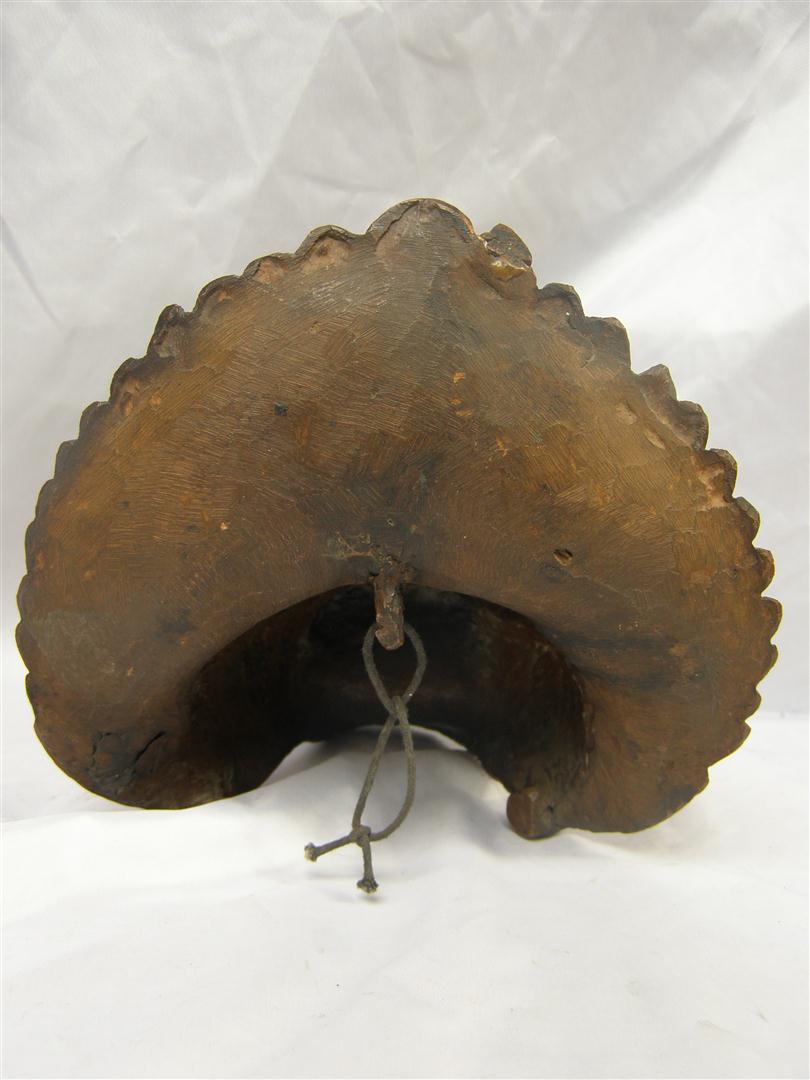


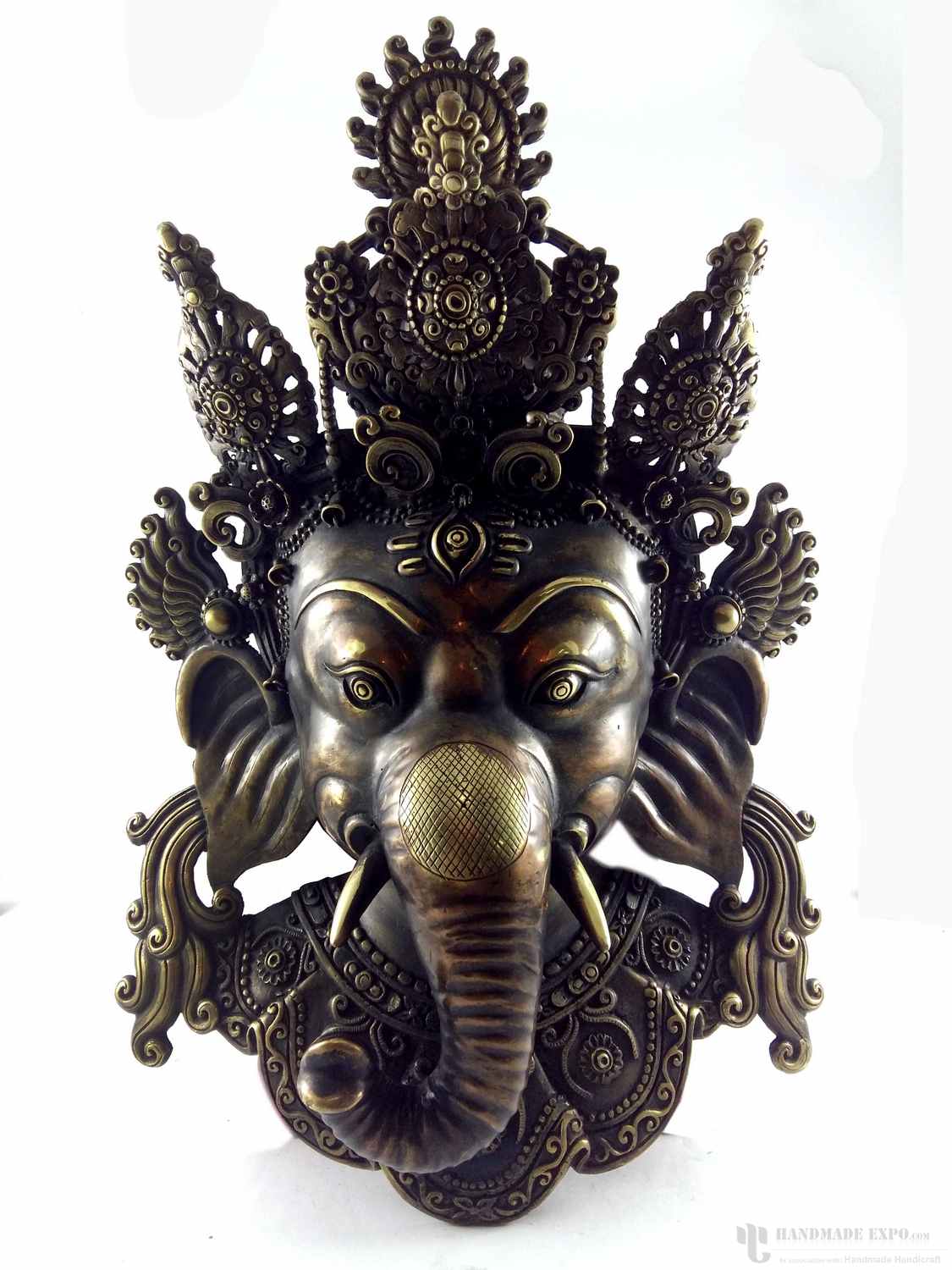
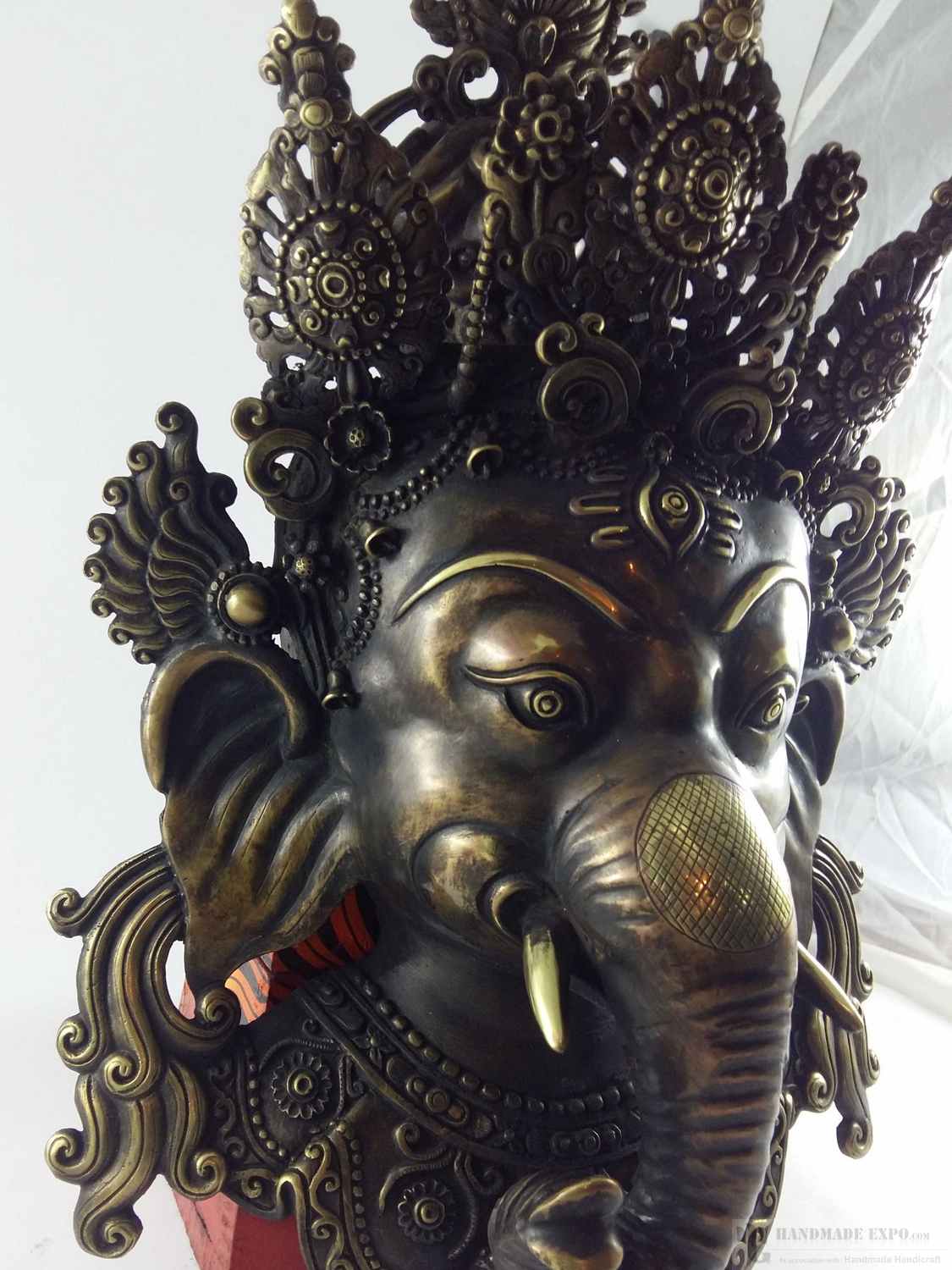
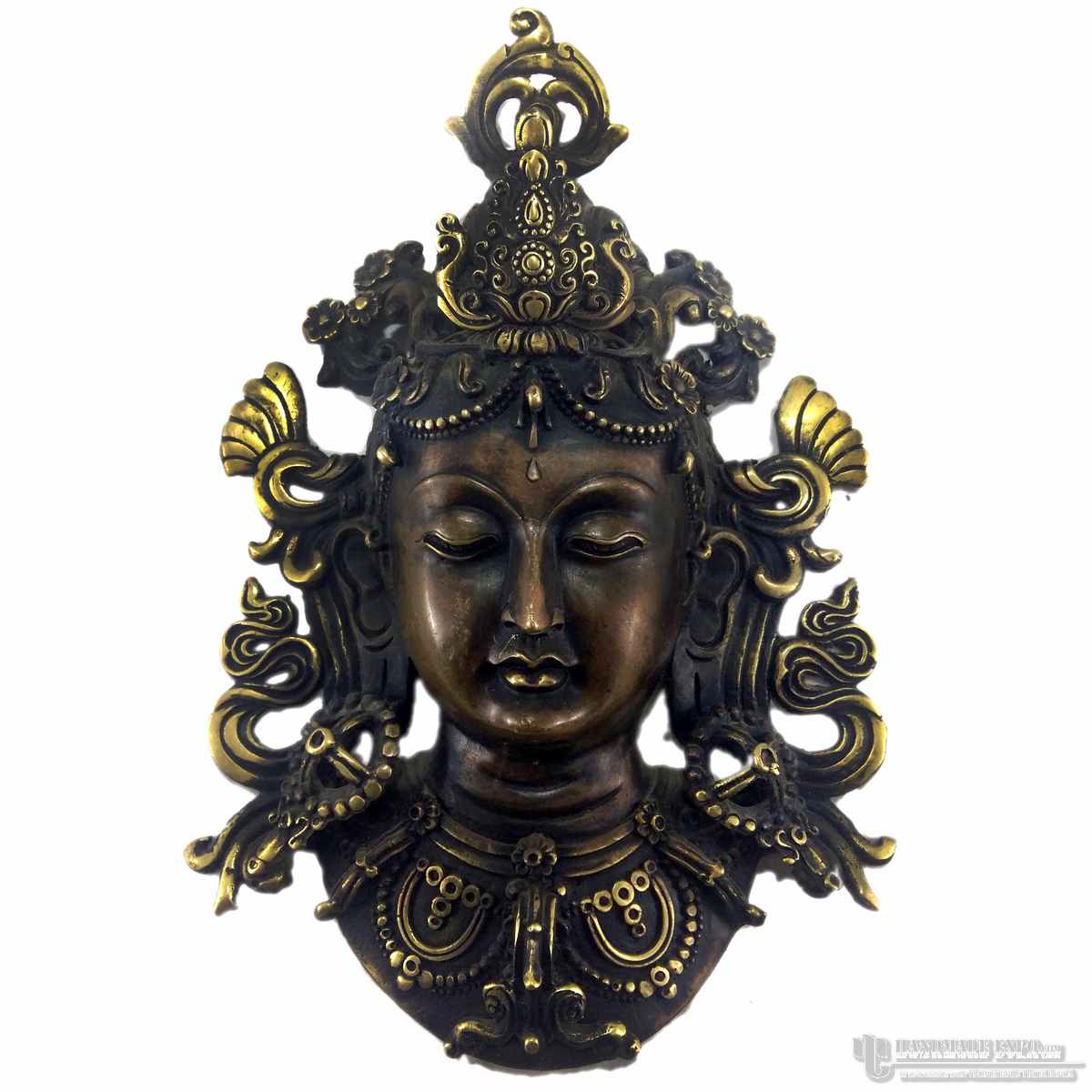
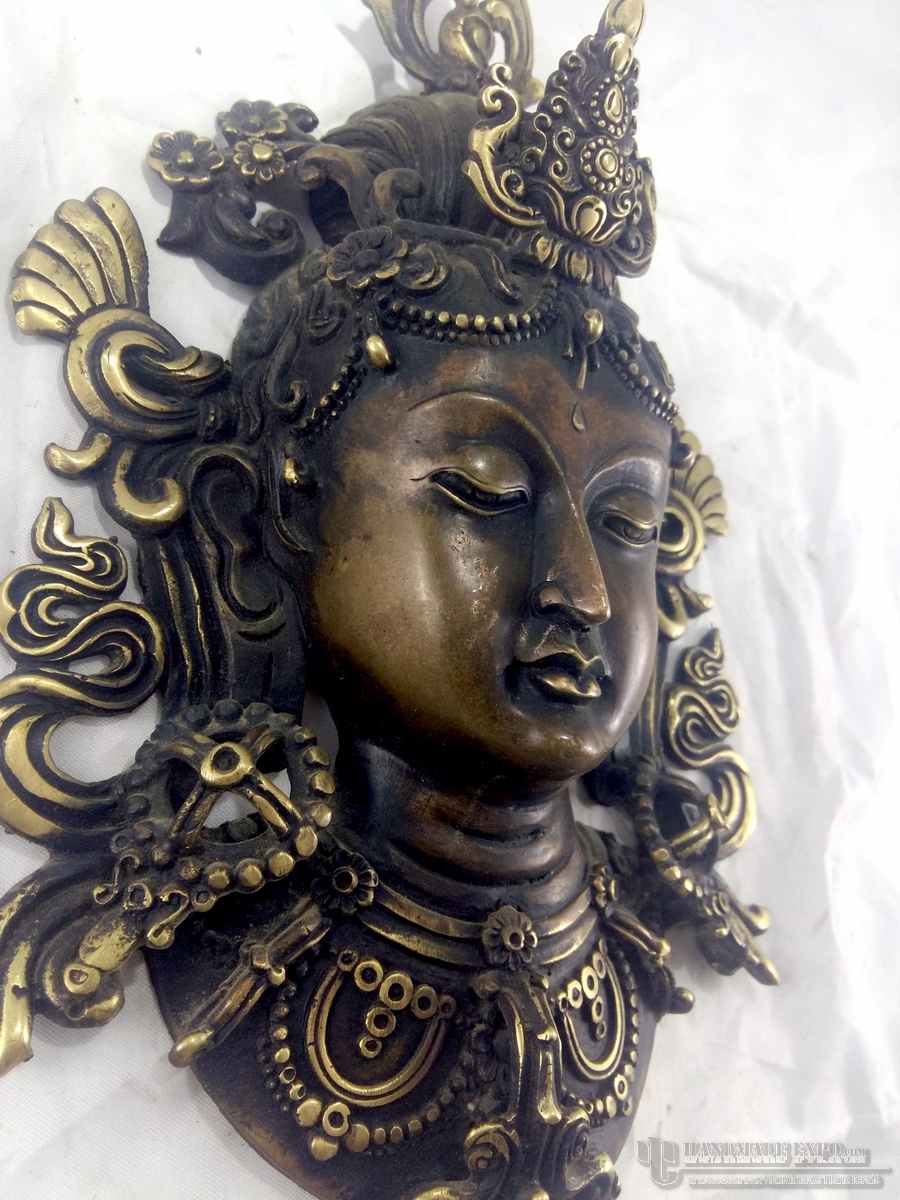
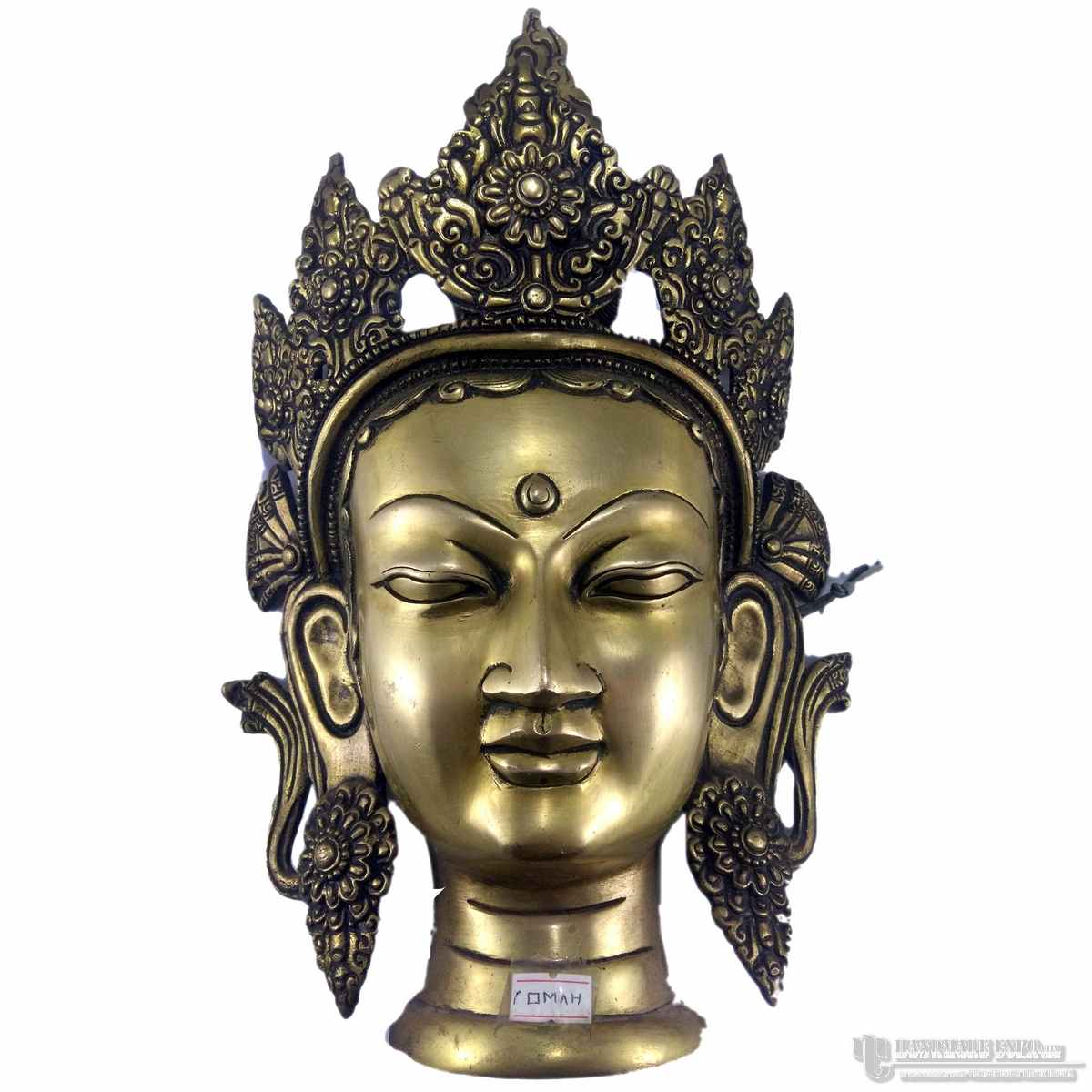 Sand Casting" title="Green Tara Metal Mask
Sand Casting" title="Green Tara Metal Mask 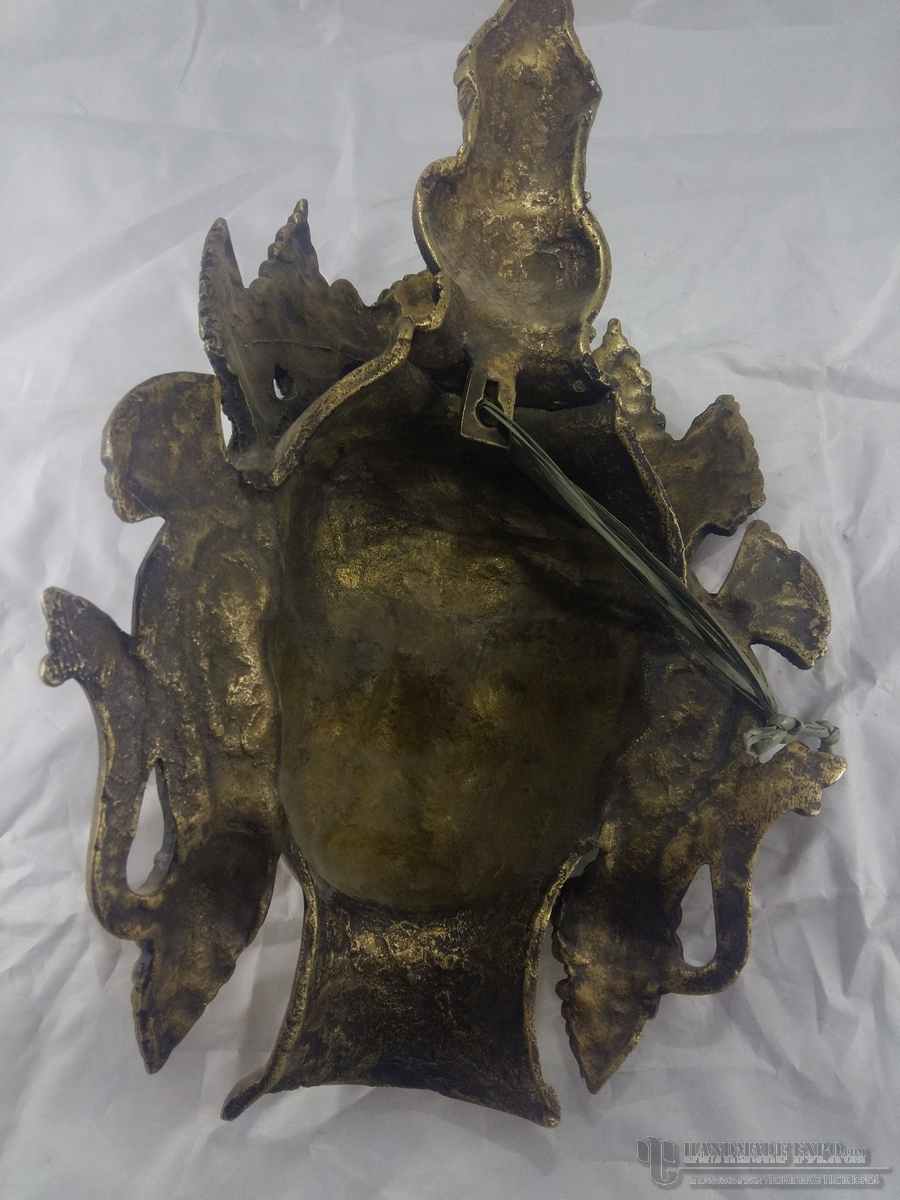 Sand Casting" title="Green Tara Metal Mask
Sand Casting" title="Green Tara Metal Mask 


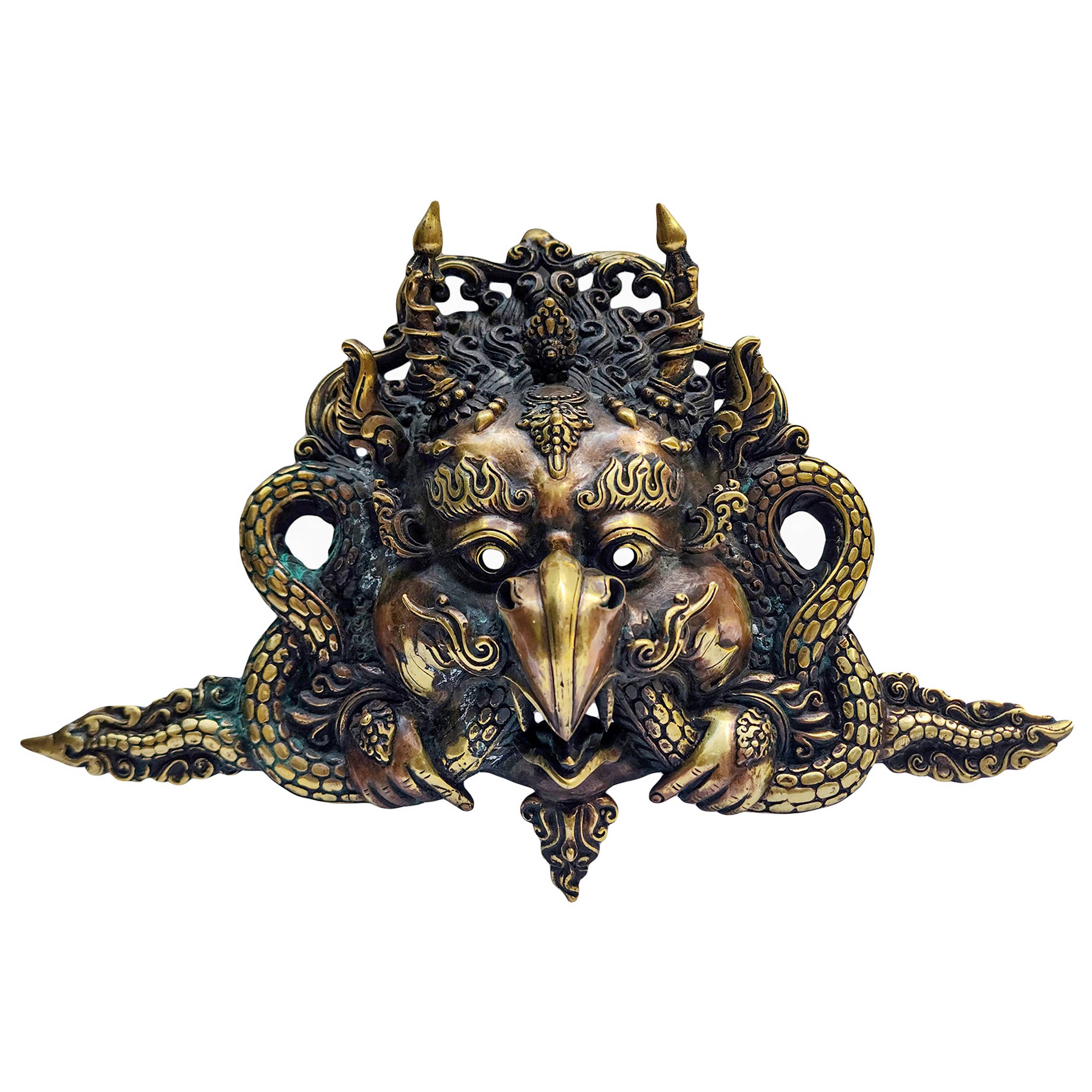
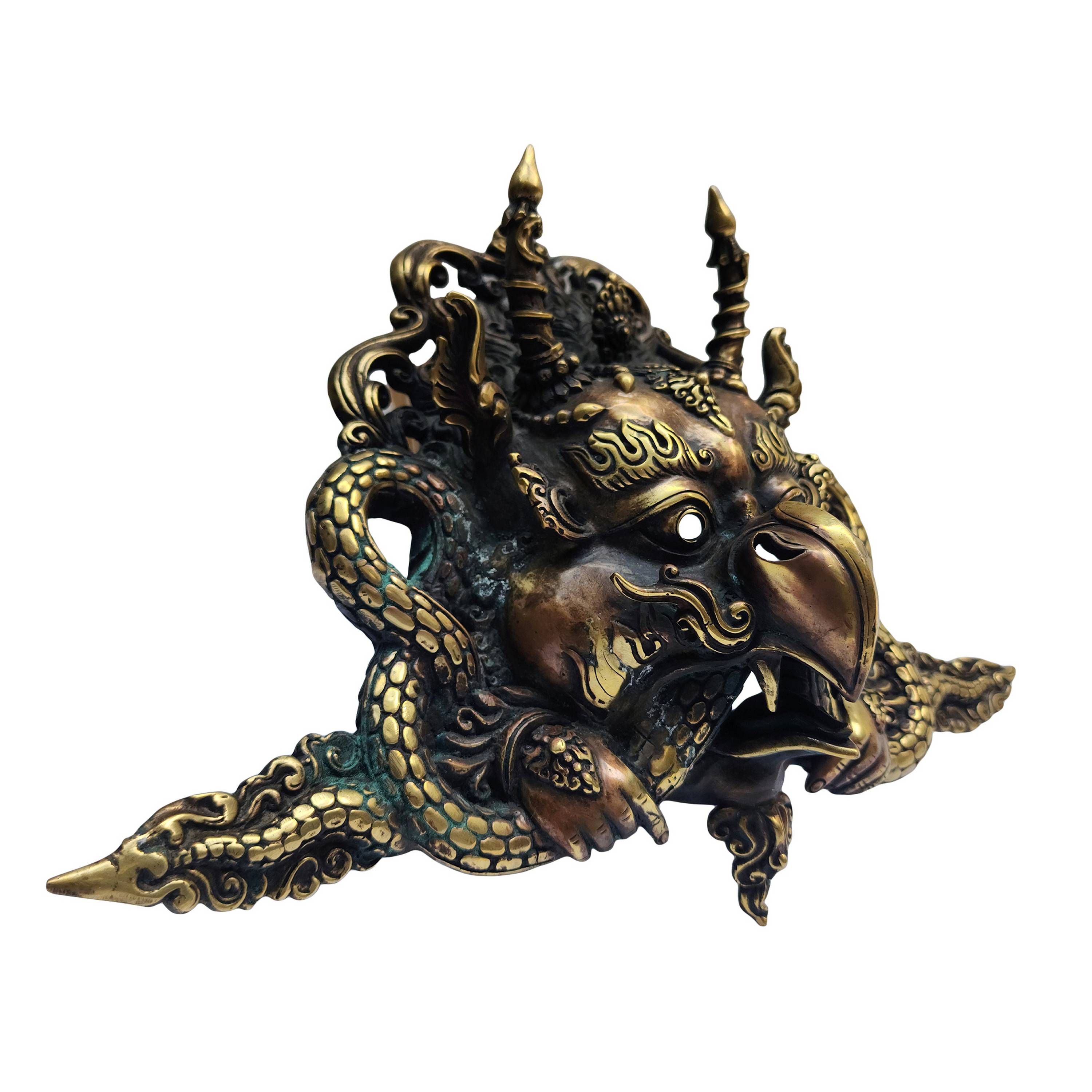



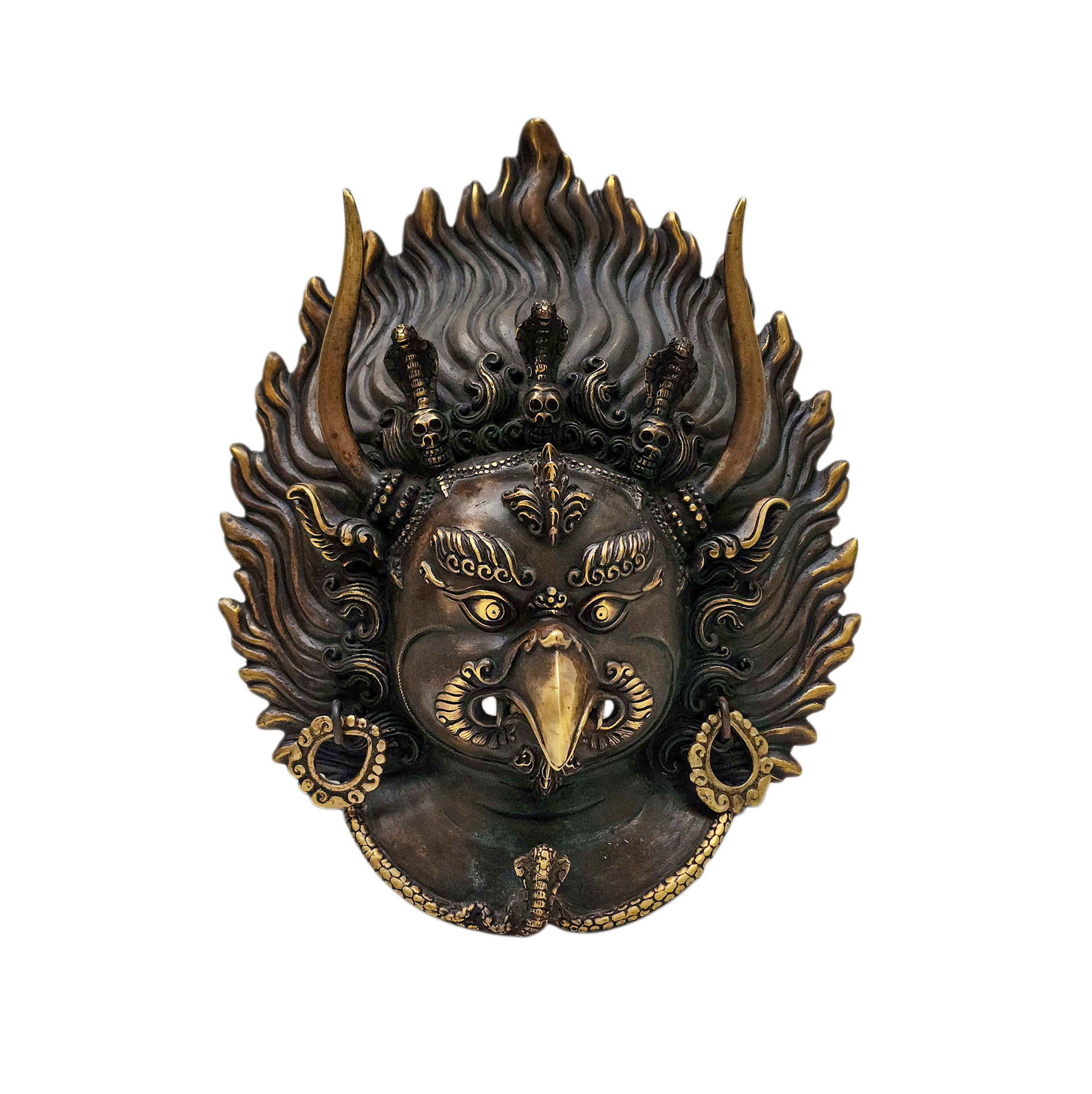 Garuda, Handmade Ritual Metal Mask, Antique Finishing" title="
Garuda, Handmade Ritual Metal Mask, Antique Finishing" title="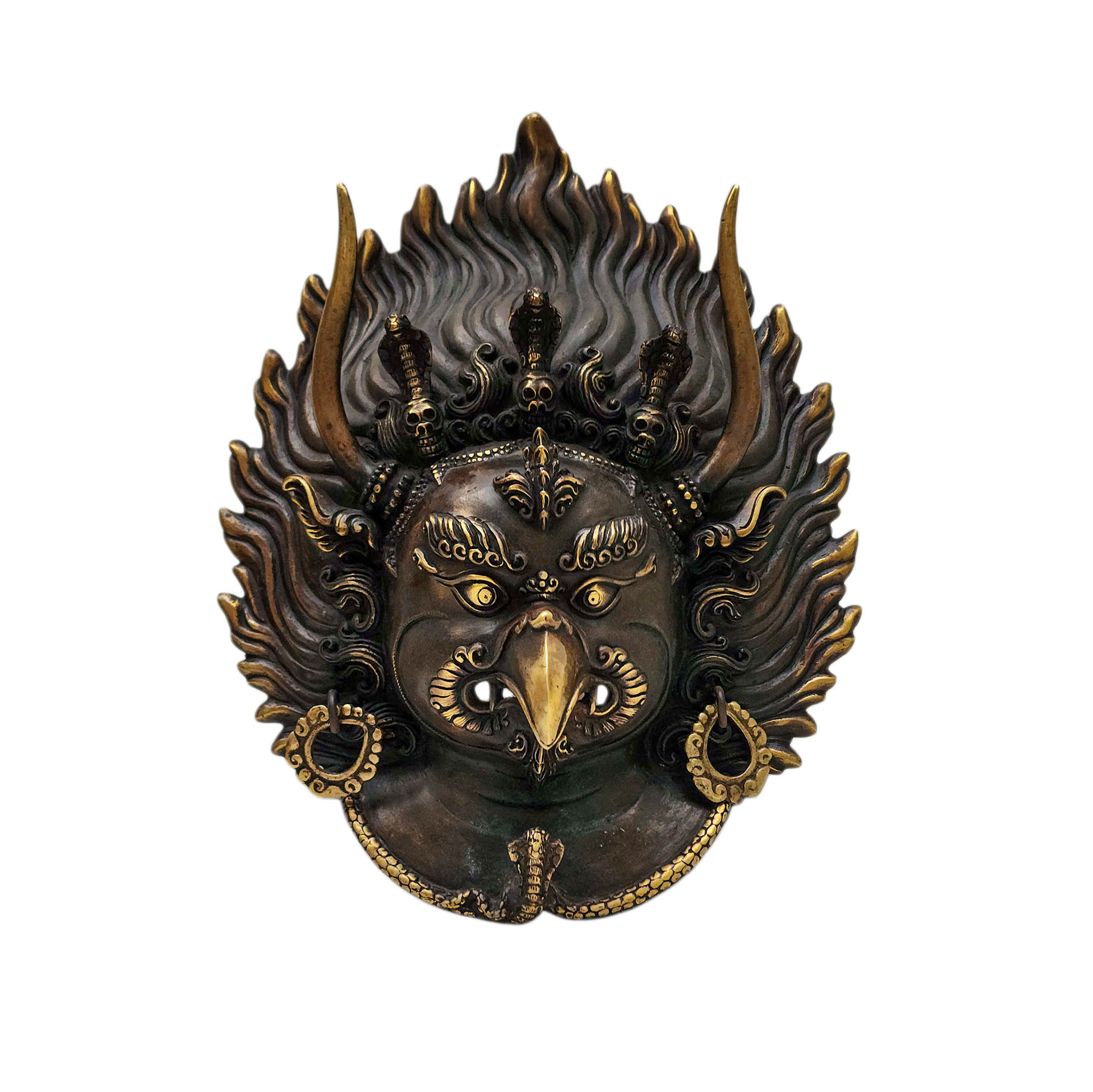 Garuda, Handmade Ritual Metal Mask, Antique Finishing" title="
Garuda, Handmade Ritual Metal Mask, Antique Finishing" title="